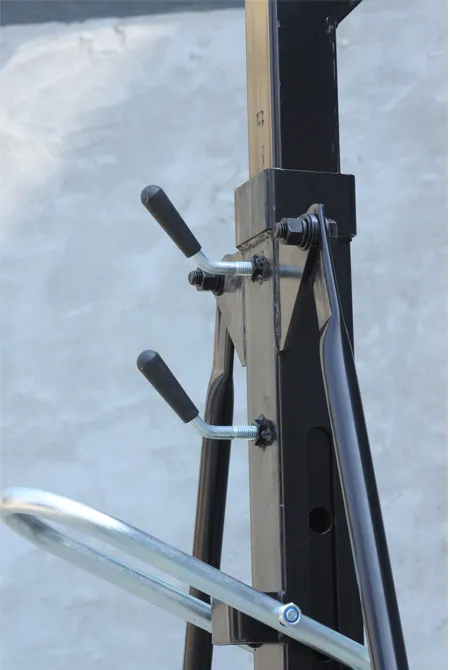Understanding Portal Cranes and Their Applications in Construction Industry
Understanding Portal Cranes Functionality and Applications
Portal cranes, also known as goliath cranes, are a pivotal piece of equipment in various industries, particularly in construction, shipyards, and manufacturing facilities. These cranes are characterized by their bridge-like structure supported by two or more legs, allowing them to traverse large areas while lifting heavy materials. This design not only maximizes efficiency in moving loads but also minimizes the footprint required for installation compared to traditional overhead cranes.
One of the most significant advantages of portal cranes is their ability to operate in outdoor environments. This feature makes them ideal for tasks such as loading and unloading shipping containers at ports or transferring heavy equipment on construction sites. With the capacity to lift tons of materials, portal cranes facilitate the movement of goods that would otherwise require multiple workers, thereby increasing productivity and reducing labor costs.
The operation of a portal crane is typically controlled by an operator situated in a cabin or via remote control, allowing for precise maneuverability. These cranes can be equipped with various attachments, such as clamshell buckets, magnets, or hooks, enabling them to handle different types of materials ranging from bulk goods to finished products. Advanced technology in modern portal cranes also includes automated systems that enhance safety and efficiency, minimizing the risk of accidents that can occur during heavy lifting operations.
portal crane

Safety is a paramount concern in any operation involving heavy machinery, and portal cranes are no exception. These cranes are constructed with robust materials and designed to withstand harsh environmental conditions. Furthermore, many models come with integrated safety features such as overload sensors, emergency stop buttons, and limit switches, ensuring safe operations. Regular maintenance and inspections are essential to ensure the continued safety and functionality of portal cranes.
In terms of applications, portal cranes are versatile tools used in various sectors. In the shipping industry, they are integral to container handling, allowing for the quick and efficient transfer of containers from ships to docks. In construction, portal cranes aid in the movement of steel beams, precast concrete panels, and other heavy materials, streamlining the building process. Additionally, they are employed in manufacturing plants for assembly line operations, enabling efficient logistics and material handling.
As industries continue to evolve, the role of portal cranes is becoming increasingly important. Innovations in crane design and technology are leading to the development of more energy-efficient models that reduce operational costs. Furthermore, the integration of smart technologies, such as IoT (Internet of Things) devices, is paving the way for predictive maintenance and enhanced monitoring of crane operations.
In summary, portal cranes serve a vital function across various industries by providing efficient, safe, and flexible lifting solutions. Their unique design and capabilities allow them to carry out heavy lifting tasks that are crucial to the success of construction projects, shipping operations, and manufacturing processes. As technology advances, we can expect to see further improvements in portal crane functionality, ensuring they remain a key asset in modern industrial operations. With their robust applications and continuous innovations, portal cranes are undoubtedly a backbone of industrial progress in today’s economy.
-
Permanent Magnetic LiftersNewsNov.01,2024
-
Operations with an Adjustable CraneNewsNov.01,2024
-
Machine Moving SkatesNewsNov.01,2024
-
Industrial Lifting MagnetsNewsNov.01,2024
-
Effective Machinery MovingNewsNov.01,2024
-
Adjustable Gantry CraneNewsNov.01,2024
-
Unlock the Power of Lifting with Permanent Magnetic LiftersNewsOct.11,2024
